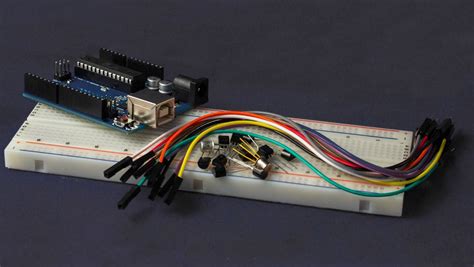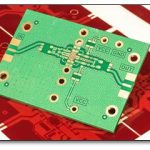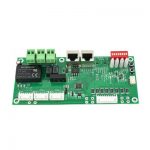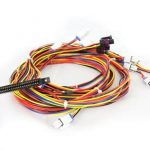What is Arduino?
Arduino is an open-source electronics platform based on easy-to-use hardware and software. It consists of a programmable circuit board (microcontroller) and a software IDE for writing and uploading code to the board. Arduino boards can read inputs (like sensors and buttons) and control outputs (like motors and LEDs). The Arduino programming language is based on C++.
Some key features of Arduino include:
- Open source and extensible hardware and software
- Easy-to-use for beginners yet flexible enough for advanced users
- Large community with many libraries, tutorials, and projects
- Affordable, with boards starting at around $20
Why Consider an Arduino Alternative?
While Arduino is great for many projects, there are some reasons you may want to consider an Arduino alternative:
- More power/memory – Some projects require a faster processor or more memory than Arduino offers
- Wireless connectivity – Arduino boards typically don’t have built-in WiFi/Bluetooth
- Lower cost – Some alternatives are cheaper, especially for simpler projects
- Specific features – Alternatives may have built-in sensors, displays, etc. for certain applications
- Learning other platforms – Exploring other tools is a great way to expand your skills
Arduino Alternative #1: Raspberry Pi
Raspberry Pi is a popular single-board computer about the size of a credit card. It runs Linux and has a full set of USB ports, HDMI port, Ethernet port, and 40 GPIO pins for interfacing with electronics. Some key features compared to Arduino:
| Feature | Raspberry Pi | Arduino |
|---|---|---|
| Processor | 1.2GHz+ quad-core ARM CPU | 16MHz ATmega microcontroller |
| Memory | 1GB+ RAM | 2-8KB RAM |
| Storage | MicroSD card slot | Limited built-in EEPROM |
| Operating System | Linux distros available | None |
| USB Ports | 4 USB 2.0 ports | 1 USB port |
| Network | Built-in Ethernet, WiFi models available | Requires add-on shield |
| GPIO Pins | 40 pins | 14-54 digital I/O pins |
| Power Draw | ~1.5W @ 5V | ~0.3W @ 5V |
| Price | $35 base model | $20-$30 |
Raspberry Pi Pros:
– Extremely powerful compared to Arduino
– Can run full Linux operating system and software
– Huge memory and storage for intensive applications
– Built-in networking and USB ports
Raspberry Pi Cons:
– Requires more power than Arduino
– Not designed for real-time applications
– More complex setup and configuration
– Higher price than Arduino
Best for: Web servers, media centers, gaming emulation, desktop computer replacement, complex projects requiring computing power

Arduino Alternative #2: ESP8266 & ESP32
The ESP8266 and ESP32 are low-cost microcontrollers with built-in WiFi and, in the case of the ESP32, Bluetooth capabilities as well. They can be programmed using the Arduino IDE and are very popular for IoT applications. Some key features compared to Arduino:
| Feature | ESP8266 | ESP32 | Arduino |
|---|---|---|---|
| Processor | 80MHz Tensilica L106 | 240MHz dual-core Tensilica LX6 | 16MHz ATmega328 |
| Memory | 160KB RAM | 512KB RAM | 2KB RAM |
| Wireless | 2.4GHz WiFi | WiFi + Bluetooth | None built-in |
| Price | ~$5 | ~$10 | $20-$30 |
ESP Pros:
– Extremely affordable
– Significantly faster processor vs Arduino
– Built-in wireless makes IoT projects easy
– Low power consumption
– Arduino compatible
ESP Cons:
– Limited GPIO compared to some Arduinos
– Fewer shields/accessories vs Arduino
– Smaller community and knowledge base
Best for: IoT sensors, wireless projects, home automation, low-power applications
Arduino Alternative #3: Teensy
The Teensy is a complete USB-based microcontroller development system with a more powerful processor than standard Arduinos. It’s small, Breadboard friendly, and can be programmed with the Arduino IDE. Some key features:
| Feature | Teensy 3.2 | Arduino Uno |
|---|---|---|
| Processor | 72 MHz Cortex-M4 | 16 MHz ATmega328 |
| Flash Memory | 256 KB | 32 KB |
| RAM | 64 KB | 2 KB |
| EEPROM | 2 KB | 1 KB |
| Digital I/O Pins | 34 | 14 |
| Analog Input Pins | 21 | 6 |
| PWM Output | 12 | 6 |
| USB Type | Micro USB | Type B |
| Price | $20 | $20-$30 |
Teensy Pros:
– Much faster than Arduino
– More memory for complex programs
– 12-bit DAC for high quality audio
– Tons of I/O options in a small package
– Supports many Arduino Shields
Teensy Cons:
– Fewer specific shields vs Arduino
– Smaller pinout requires adapter for some shields
– Not as beginner-friendly as Arduino
Best for: Complex, high-speed microcontroller projects, USB devices, audio applications
Arduino Alternative #4: STM32 Boards
STM32 is a family of 32-bit microcontroller ICs based on the ARM Cortex-M processor. Various development boards are available which are compatible with the Arduino IDE while providing more power and features. One popular line is the STM32 Blue Pill boards. Some key features:
| Feature | STM32F103C8T6 Blue Pill | Arduino Uno |
|---|---|---|
| Processor | 72 MHz ARM Cortex M3 | 16 MHz ATmega328 |
| Flash | 64-128 KB | 32 KB |
| RAM | 20 KB | 2 KB |
| GPIO | 32-80 pins | 14 digital, 6 analog |
| Peripherals | 2-3 UART, 2 SPI, USB | 1 UART, 1 SPI |
| Timers | 3-4 general purpose | 3 timers |
| Price | ~$2-5 | $20-$30 |
STM32 Pros:
– Extremely affordable
– Much more powerful than Arduino
– Good for learning 32-bit ARM development
– Arduino IDE compatible
– Advanced peripherals like USB and CAN
STM32 Cons:
– Less beginner friendly than Arduino
– Smaller community and resources
– Fewer shields and accessories
Best for: Projects requiring 32-bit power on a budget, CAN bus applications, USB connectivity
Other Arduino Alternatives to Consider
- BeagleBone – High performance, open-source single board computer
- Particle Photon – Low cost IoT development kit with cloud platform
- TI LaunchPad – Low cost boards for TI’s microcontroller ecosystem
- PIC Boards – 8-32 bit boards using Microchip’s PIC microcontrollers
- NVIDIA Jetson – Powerful boards for AI and robotics applications
Arduino Alternatives FAQs
What’s the best Arduino alternative for beginners?
For beginners, the ESP8266/ESP32 boards offer an easy transition from Arduino with more power and wireless connectivity at a great price. The Raspberry Pi is also a good choice if you want to learn Linux and have a complete computer.
What’s the most powerful Arduino alternative?
The Raspberry Pi offers the most processing power and memory of common Arduino alternatives. For intensive applications like AI, the NVIDIA Jetson provides even more power with a GPU.
What’s the cheapest Arduino alternative?
The cheapest options are the ESP8266, costing about $5, and some STM32 boards as low as $2. These provide a lot of value for simple, low-cost projects.
Are Arduino alternatives compatible with Arduino code and shields?
Many Arduino alternatives can be programmed with the Arduino IDE and support common Arduino libraries. Compatibility with shields varies – Teensy supports many Arduino shields while Raspberry Pi and others require different add-on boards.
What’s the best Arduino alternative for wireless projects?
For wireless projects, the ESP8266 and ESP32 are the best choices thanks to their built-in WiFi and Bluetooth capabilities. They’re affordable, power efficient, and can sleep to save power.
Conclusion
While Arduino is a great platform, there are many Arduino alternatives worth considering depending on your project requirements. For wireless IoT projects, the ESP8266/ESP32 are excellent low-cost choices. When you need more computing power, the Raspberry Pi provides a complete Linux computer. And for high-speed embedded applications, Teensy and STM32 boards offer compelling performance and features.
By exploring Arduino alternatives, you can find the best fit for your needs while expanding your knowledge and skills. With so many great choices available, it’s an exciting time to be learning and building with electronics!






Leave a Reply